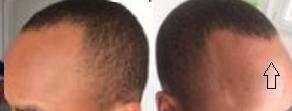Hi,
I am confused by some of your answers in the forum relating to graft anchorage.
Specifically, in your study with Dr. Bernstein, you conclude that from the 6th day, it is not possible to dislodge a graft by pulling the hair. Similarly, this is not possible by the 9th day by pulling a scab attached to the scalp/hair.
However, on some of your answers to questions related to graft integrity, you mention that as long as the scab is present, there is risk to the graft coming out (e.g. you advocate not wearing a hat until scabs come out, etc.).
So, are you saying that from the 9th day onward, the graft will not come out even if the scabs are scrubbed off, wearing a hat, etc. and the only time to worry about losing grafts due to scabs is in the first 9 days? Or is it possible to still dislodge a graft after the 9th day?
The reason I ask, is that I have a lot of scabs and started trying to remove them on the 11th day, and am wondering if the grafts would have set permanently by then, scab or no scab.
Thank
The graft pull study (PDF file) was done to determine when the removal of the graft, really meant that the entire growth center of the graft was removed.
We found that in the first six days, although the physical graft could be pulled out, the graft growth center probably remained (reflected the sleeve of the graft itself). We generally felt better when the graft pull was done at 9 days, but that did not mean that the graft growth center could be removed at the 9th day.
We are big on post-operative correct washing to minimize the scabs present. Some doctors do not give the patient the instructions on proper washing and scabbing may remain for very long periods (as long as 3 weeks). Although pulling out the grafts (at say 20 days) would still have what appears to be graft material in the pulled samples, there is little doubt that the graft growth center did not come out with these pulled grafts at 14 or 20 days.

